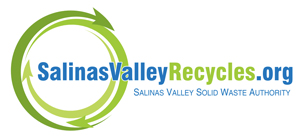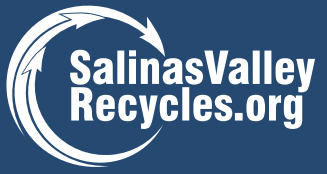A mission statement declares the core purpose of a company, organization or person; its reason for existing; a written declaration of an organization’s core purpose and focus that normally remains unchanged over time.
A vision statement expresses the aspirations of a company or organization where it wants to be or do at some point in the future.
Salinas Valley Recycles’ Mission, Vision, and Values were developed and approved by its Board of Directors on July 31, 2013, and have continuously been reaffirmed during the Board’s strategic planning session every six months since then. SVR’s Strategic Plan goals and objectives promote our mission and vision and put our core values into practice.
Our Mission
To manage Salinas Valley solid waste as a resource, promoting equitable, sustainable, environmentally sound and cost-effective practices through an integrated system of waste reduction, reuse, recycling, innovative technology, customer service and education.
Our Vision
To reduce the amount of waste by promoting individual and corporate responsibility. To recover waste for its highest and best use while balancing rates and services. To transform our business from burying waste to utilizing waste as a resource. To eliminate the need for landfills.
Our Values
- Innovation
- Integrity
- Public Education
- Efficiency
- Fiscal Prudence
- Resourcefulness
- Customer Service
- Community Partnerships
- Equity
Strategic Plan
SVR has endured a strategic planning process for guided focus and to help allocate resources. The last Strategic Planning Workshop was held on December 15, 2023, with the 2024 Priorities approved by the Board of Directors on January 18, 2024. The Strategic Plan Priorities promote the agency’s Mission and Vision and help put its core Values into practice.
Priorities for 2024
A. Governance and collaboration
- Improve governance and board relations.
- Provide equitable administrative support.
- Develop succession plan.
- Invest in training and technology.
B. Financial sustainability
- Maintain equitable and reasonable rates.
- Review the JPA member jurisdictions’ contributions, governance alternatives, and orientation to the revenue forecast.
- Continue to prefund liabilities and debt.
C. Facilities and master planning
- Develop summary of the five to 10-year outlook of knowns and unknowns.
- Explore alternative and emerging technologies to reduce landfill dependance.
D. Comply, adapt, and respond to regulatory changes
- Legislative program
- Ensure compliance with new organics requirements and outreach.
- Advocate against unfunded mandates and for emerging technologies.
E. High-quality community engagement.
- Foster Relationships for outreach and education.
- Create metrics to ensure equitable services for all.
- Maintain a comprehensive communication and branding strategy.
- Continue to deliver the public education strategy.

